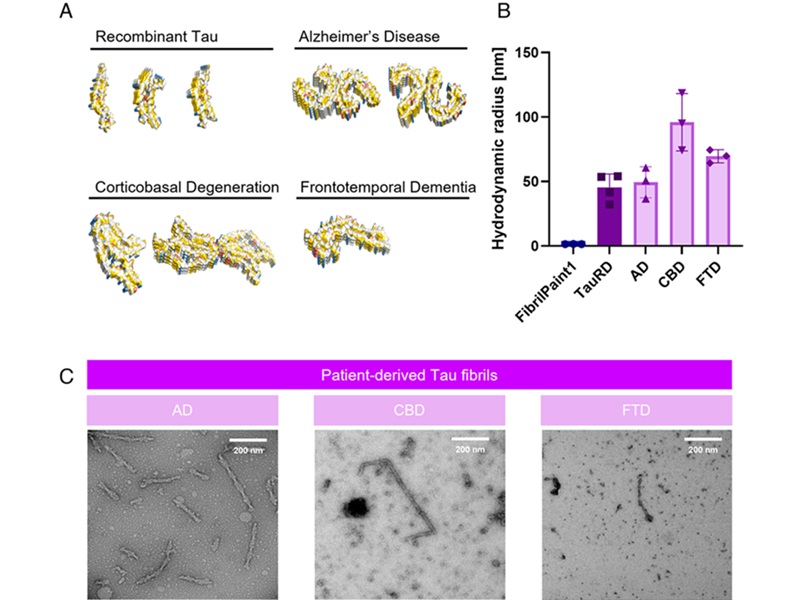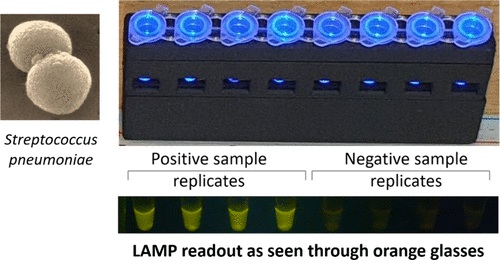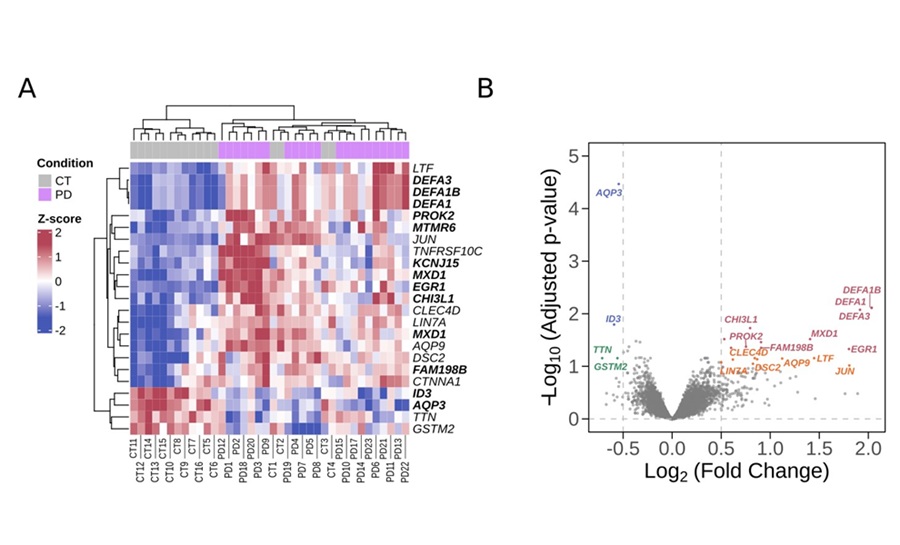DNA Repair Map Expected to Enhance Human Genome Studies
|
By LabMedica International staff writers Posted on 10 May 2015 |
Researchers have created a map of the entire human genome that shows where repairs to DNA that has been damaged by radiation or chemical treatment are made.
Investigators at the University of North Carolina (Chapel Hill, USA) developed a technique called XR-Seq (excision repair sequencing) in order to prepare the map, which was presented in a paper published in the May 1, 2015, issue of the journal Genes & Development.
Human nucleotide excision repair generates two incisions surrounding the site of damage, creating a polymer of approximately 30 repeating units. In XR-seq, this fragment is isolated and subjected to high-throughput sequencing.
The investigators used XR-seq to produce stranded, nucleotide-resolution maps of repair of two UV-induced DNA damages in human cells: cyclobutane pyrimidine dimers (CPDs) and (6-4) pyrimidine–pyrimidone photoproducts [(6-4)PPs]. In wild-type cells, CPD repair was highly associated with transcription, specifically with the template strand.
Experiments in cells defective in either transcription-coupled excision repair or general excision repair isolated the contribution of each pathway to the overall repair pattern and showed that transcription-coupled repair of both photoproducts occurred exclusively on the template strand. XR-seq maps captured transcription-coupled repair at sites of divergent gene promoters and bidirectional enhancer RNA (eRNA) production at enhancers. XR-seq data also uncovered the repair characteristics and novel sequence preferences of CPDs and (6-4)PPs.
"Now we can say to a fellow scientist, tell us the gene you are interested in or any spot on the genome, and we will tell you how it is repaired," said senior author Dr. Aziz Sancar, professor of biochemistry and biophysics at the University of North Carolina. "Out of six billion base pairs, pick out a spot and we will tell you how it is repaired."
It is expected that XR-seq and the resulting repair maps will facilitate studies of the effects of genomic location, chromatin context, transcription, and replication on DNA repair in human cells.
Related Links:
University of North Carolina
Investigators at the University of North Carolina (Chapel Hill, USA) developed a technique called XR-Seq (excision repair sequencing) in order to prepare the map, which was presented in a paper published in the May 1, 2015, issue of the journal Genes & Development.
Human nucleotide excision repair generates two incisions surrounding the site of damage, creating a polymer of approximately 30 repeating units. In XR-seq, this fragment is isolated and subjected to high-throughput sequencing.
The investigators used XR-seq to produce stranded, nucleotide-resolution maps of repair of two UV-induced DNA damages in human cells: cyclobutane pyrimidine dimers (CPDs) and (6-4) pyrimidine–pyrimidone photoproducts [(6-4)PPs]. In wild-type cells, CPD repair was highly associated with transcription, specifically with the template strand.
Experiments in cells defective in either transcription-coupled excision repair or general excision repair isolated the contribution of each pathway to the overall repair pattern and showed that transcription-coupled repair of both photoproducts occurred exclusively on the template strand. XR-seq maps captured transcription-coupled repair at sites of divergent gene promoters and bidirectional enhancer RNA (eRNA) production at enhancers. XR-seq data also uncovered the repair characteristics and novel sequence preferences of CPDs and (6-4)PPs.
"Now we can say to a fellow scientist, tell us the gene you are interested in or any spot on the genome, and we will tell you how it is repaired," said senior author Dr. Aziz Sancar, professor of biochemistry and biophysics at the University of North Carolina. "Out of six billion base pairs, pick out a spot and we will tell you how it is repaired."
It is expected that XR-seq and the resulting repair maps will facilitate studies of the effects of genomic location, chromatin context, transcription, and replication on DNA repair in human cells.
Related Links:
University of North Carolina
Latest BioResearch News
- Genome Analysis Predicts Likelihood of Neurodisability in Oxygen-Deprived Newborns
- Gene Panel Predicts Disease Progession for Patients with B-cell Lymphoma
- New Method Simplifies Preparation of Tumor Genomic DNA Libraries
- New Tool Developed for Diagnosis of Chronic HBV Infection
- Panel of Genetic Loci Accurately Predicts Risk of Developing Gout
- Disrupted TGFB Signaling Linked to Increased Cancer-Related Bacteria
- Gene Fusion Protein Proposed as Prostate Cancer Biomarker
- NIV Test to Diagnose and Monitor Vascular Complications in Diabetes
- Semen Exosome MicroRNA Proves Biomarker for Prostate Cancer
- Genetic Loci Link Plasma Lipid Levels to CVD Risk
- Newly Identified Gene Network Aids in Early Diagnosis of Autism Spectrum Disorder
- Link Confirmed between Living in Poverty and Developing Diseases
- Genomic Study Identifies Kidney Disease Loci in Type I Diabetes Patients
- Liquid Biopsy More Effective for Analyzing Tumor Drug Resistance Mutations
- New Liquid Biopsy Assay Reveals Host-Pathogen Interactions
- Method Developed for Enriching Trophoblast Population in Samples
Channels
Clinical Chemistry
view channel
VOCs Show Promise for Early Multi-Cancer Detection
Early cancer detection is critical to improving survival rates, but most current screening methods focus on individual cancer types and often involve invasive procedures. This makes it difficult to identify... Read more
Portable Raman Spectroscopy Offers Cost-Effective Kidney Disease Diagnosis at POC
Kidney disease is typically diagnosed through blood or urine tests, often when patients present with symptoms such as blood in urine, shortness of breath, or weight loss. While these tests are common,... Read moreMolecular Diagnostics
view channel
First Direct Measurement of Dementia-Linked Proteins to Enable Early Alzheimer’s Detection
The disease process in Alzheimer’s begins long before memory loss or cognitive decline becomes apparent. During this silent phase, misfolded proteins gradually form amyloid fibrils, which accumulate in... Read more
New Diagnostic Method Detects Pneumonia at POC in Low-Resource Settings
Pneumonia continues to be one of the leading causes of death in low- and middle-income countries, where limited access to advanced laboratory infrastructure hampers early and accurate diagnosis.... Read moreHematology
view channel
ADLM’s New Coagulation Testing Guidance to Improve Care for Patients on Blood Thinners
Direct oral anticoagulants (DOACs) are one of the most common types of blood thinners. Patients take them to prevent a host of complications that could arise from blood clotting, including stroke, deep... Read more
Viscoelastic Testing Could Improve Treatment of Maternal Hemorrhage
Postpartum hemorrhage, severe bleeding after childbirth, remains one of the leading causes of maternal mortality worldwide, yet many of these deaths are preventable. Standard care can be hindered by delays... Read more
Pioneering Model Measures Radiation Exposure in Blood for Precise Cancer Treatments
Scientists have long focused on protecting organs near tumors during radiotherapy, but blood — a vital, circulating tissue — has largely been excluded from dose calculations. Each blood cell passing through... Read moreImmunology
view channel
Chip Captures Cancer Cells from Blood to Help Select Right Breast Cancer Treatment
Ductal carcinoma in situ (DCIS) accounts for about a quarter of all breast cancer cases and generally carries a good prognosis. This non-invasive form of the disease may or may not become life-threatening.... Read more
Blood-Based Liquid Biopsy Model Analyzes Immunotherapy Effectiveness
Immunotherapy has revolutionized cancer care by harnessing the immune system to fight tumors, yet predicting who will benefit remains a major challenge. Many patients undergo costly and taxing treatment... Read moreMicrobiology
view channel
High-Throughput Enteric Panels Detect Multiple GI Bacterial Infections from Single Stool Swab Sample
Gastrointestinal (GI) infections are among the most common causes of illness worldwide, leading to over 1.7 million deaths annually and placing a heavy burden on healthcare systems. Conventional diagnostic... Read more
Fast Noninvasive Bedside Test Uses Sugar Fingerprint to Detect Fungal Infections
Candida bloodstream infections are a growing global health threat, causing an estimated 6 million cases and 3.8 million deaths annually. Hospitals are particularly vulnerable, as weakened patients after... Read morePathology
view channel
New Molecular Analysis Tool to Improve Disease Diagnosis
Accurately distinguishing between similar biomolecules such as proteins is vital for biomedical research and diagnostics, yet existing analytical tools often fail to detect subtle structural or compositional... Read more
Tears Offer Noninvasive Alternative for Diagnosing Neurodegenerative Diseases
Diagnosing and monitoring eye and neurodegenerative diseases often requires invasive procedures to access ocular fluids. Ocular fluids like aqueous humor and vitreous humor contain valuable molecular information... Read moreTechnology
view channel
Portable Biosensor Diagnoses Psychiatric Disorders Using Saliva Samples
Early diagnosis of psychiatric disorders such as depression, schizophrenia, and bipolar disorder remains one of medicine’s most pressing challenges. Current diagnostic methods rely heavily on clinical... Read more
Cell-Sorting Device Uses Electromagnetic Levitation to Precisely Direct Cell Movement
Sorting different cell types—such as cancerous versus healthy or live versus dead cells—is a critical task in biology and medicine. However, conventional methods often require labeling, chemical exposure,... Read moreIndustry
view channel
Qiagen Acquires Single-Cell Omics Firm Parse Biosciences
QIAGEN (Venlo, Netherlands) has entered into a definitive agreement to fully acquire Parse Biosciences (Seattle, WA, USA), a provider of scalable, instrument-free solutions for single-cell research.... Read more
Puritan Medical Products Showcasing Innovation at AMP2025 in Boston
Puritan Medical Products (Guilford, ME, USA), the world’s most trusted manufacturer of swabs and specimen collection devices, is set to exhibit at AMP2025 in Boston, Massachusetts, from November 11–15.... Read more
Advanced Instruments Merged Under Nova Biomedical Name
Advanced Instruments (Norwood, MA, USA) and Nova Biomedical (Waltham, MA, USA) are now officially doing business under a single, unified brand. This transformation is expected to deliver greater value... Read more
























